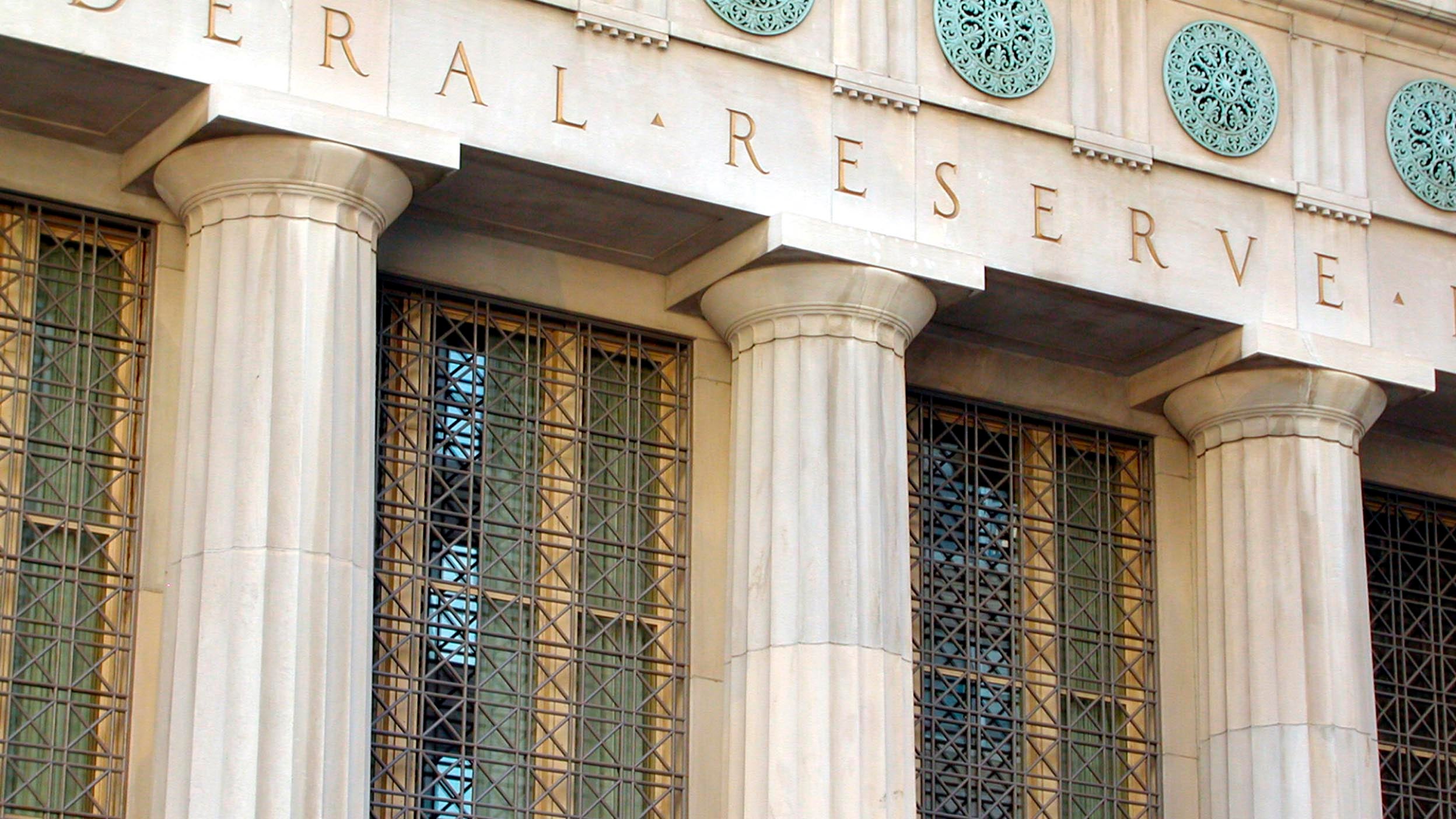
Markets and Economy 2025 investment outlook: After the landing
We expect significant monetary policy easing to push global growth higher in 2025, fostering an attractive environment for risk assets as central banks achieve a “soft landing.”

Recent data reports from the US, Europe, and Canada show that inflation has been slowing.
The Federal Reserve, the Bank of Canada, the Bank of England, and the European Central Bank have all kept rates steady in their most recent meetings.
It appears markets are finally getting the memo that central banks are very likely done hiking rates.
In New York City, one of the best-known subway lines is the D Train, an express line that runs from the Bronx to Manhattan to Brooklyn. But in my lexicon, there is another ‘D’ Train. In fact, for a while now, I’ve been answering questions about inflation by saying “We’re on the D Train.” Why? I believe developed economies are on the disinflation train, which is providing express transportation to the end of the rate hike cycle — and ultimately the start of rate cuts.
I’ve also said that not every data point would perfectly support the disinflation narrative, but if we look at all the data as a whole, we would see Western developed economies are cooling and there is a strong disinflationary trend underway. I think this is coming to fruition. Just consider the data we have seen recently.
As a result of this disinflation trend, the Federal Open Market Committee (FOMC) kept US interest rates steady at its November meeting — a dovish pause. US Federal Reserve (Fed) Chair Jay Powell certainly reserved the right to hike rates again, but my view continues to be that the Fed is very likely done with rate hikes. Key points7:
The Bank of England (BOE) also decided to keep rates steady at its last meeting. The BOE's Monetary Policy Committee (MPC) voted to keep its policy rate on hold at 5.25%, recognizing that the risks of overtightening policy are increasing. This follows both the European Central Bank and the Bank of Canada’s decisions last week to keep policy rates static.
As Bank of England member Swati Dhingra recently noted, there are long lags between monetary policy decisions and their impact on the economy. She suggested that the UK economy currently only reflects a small portion of all the BOE hikes in this cycle. As I have said, the lagged effects of monetary policy should be an important consideration for central bankers; it is the prism through which they should view the economy and inflation and consider next steps. And I believe more are starting to do just that.
Markets are finally getting the memo that central banks could very likely be done hiking rates. The 10-year US Treasury yield eased significantly the week ending Nov. 3, starting with the underwhelming ISM Manufacturing PMI, then the dovish Fed meeting, and then the tepid jobs report.8 Other long bond yields also followed this trend, from 10-year UK gilt yields to 10-year German bund yields.9
What does that mean? It means that it is highly unlikely we see any more rate hikes from Western developed central banks. And we could see rate cuts coming soon; I believe central bankers “doth protest too much.” Yes, they would like to keep rates higher for longer, but if the cumulative effects of rate hikes already enacted will soon have far more of an impact on inflation and growth, that may mean they must start cutting sooner — and that likely could start with the Bank of England.
What we know is that in recent tightening cycles, the Fed has started to cut rates within eight months of their last rate hike. With the Fed’s last rate hike in July, that suggests a cut could happen in the second quarter.
Yes, there are risks to the view that disinflation will continue — specifically higher crude oil prices. However, as I have noted before, higher oil prices have taken time to seep into core inflation. In the meantime, they can reduce spending power and, thereby, tamp down consumer demand, helping do some of the Fed’s work for it. And luckily, we have actually seen oil prices in retreat in recent days.
Looking ahead, I anticipate volatility because there is still significant monetary policy uncertainty (and other geopolitical uncertainties). That means we could still see yields trade in a wide range, and we could see a 'good macro news is bad market news’ scenario play out in the near term. But risk appetite is edging up as each day likely brings us closer to the definitive end of rate hikes (and, arguably soon thereafter, the start of rate cuts…).
Date |
Report |
What it tells us |
|---|---|---|
Nov. 6 |
Bank of Japan Monetary Policy Meeting Minutes |
Gives further insight into the central bank’s decision-making process.
|
Nov. 7 |
Reserve Bank of Australia Monetary Policy Decision
|
Reveals the latest decision on the path of interest rates. |
Nov. 7 |
UK GDP
|
Measures a region’s economic activity.
|
Nov. 7 |
UK Industrial Production
|
Indicates the economic health of the industrial sector. |
Nov. 10 |
Michigan Inflation Expectations (preliminary)
|
Tracks consumer sentiment regarding inflation.
|
Ongoing |
Several speeches from Fed Chair Powell and other FOMC members
|
Gives further insight into the views of Federal Reserve members. |
Source: S&P Global/Hamburg Commercial Bank, as of Nov. 6, 2023
Source: Eurostat, as of Oct. 31, 2023
Source: Statistics Canada, as of Nov. 3, 2023
Source: Statistics Canada, as of Oct. 17, 2023
Source: US Bureau of Labor Statistics, Nov. 3, 2023
Source: Institute for Supply Management, as of Nov. 3, 2023
Source: Transcript of Fed Chair Powell’s Press Conference, Nov. 1, 2023
Source: Bloomberg, Nov. 3, 2023
Source: Bloomberg, Nov. 3, 2023

We expect significant monetary policy easing to push global growth higher in 2025, fostering an attractive environment for risk assets as central banks achieve a “soft landing.”

Despite an eventful week in politics, monetary policy from central banks still matters more to markets and economies over the long term.

The Federal Reserve unanimously decided to cut rates by a quarter point, and in my opinion, there’s far more to go for the Fed in this easing cycle.
Important information
NA3214834
Header image: Alena Kravchenko / Getty
Past performance is not a guarantee of future results.
This does not constitute a recommendation of any investment strategy or product for a particular investor. Investors should consult a financial professional before making any investment decisions.
All investing involves risk, including the risk of loss.
In general, stock values fluctuate, sometimes widely, in response to activities specific to the company as well as general market, economic and political conditions.
Fixed-income investments are subject to credit risk of the issuer and the effects of changing interest rates. Interest rate risk refers to the risk that bond prices generally fall as interest rates rise and vice versa. An issuer may be unable to meet interest and/or principal payments, thereby causing its instruments to decrease in value and lowering the issuer’s credit rating.
Alternative products typically hold more non-traditional investments and employ more complex trading strategies, including hedging and leveraging through derivatives, short selling and opportunistic strategies that change with market conditions. Investors considering alternatives should be aware of their unique characteristics and additional risks from the strategies they use. Like all investments, performance will fluctuate. You can lose money.
The risks of investing in securities of foreign issuers can include fluctuations in foreign currencies, political and economic instability, and foreign taxation issues.
Disinflation, a slowing in the rate of price inflation, describes instances when the inflation rate has reduced marginally over the short term.
Inflation is the rate at which the general price level for goods and services is increasing.
Core inflation is the change in the costs of goods and services, but it does not include those from the food and energy sectors.
Headline inflation is the total inflation in an economy, including food and energy.
The Consumer Price Index (CPI) measures change in consumer prices as determined by the US Bureau of Labor Statistics.
A basis point is one hundredth of a percentage point.
The Federal Open Market Committee (FOMC) is a 12-member committee of the Federal Reserve Board that meets regularly to set monetary policy, including the interest rates that are charged to banks.
The Federal Reserve’s “dot plot” is a chart that the central bank uses to illustrate its outlook for the path of interest rates.
Dovish refers to an economic outlook which generally supports low interest rates as a means of encouraging growth within the economy.
The policy rate is the rate that is used by central bank to implement or signal its monetary policy stance.
The European Central Bank (ECB) is responsible for the monetary policy of the European Union.
The eurozone (also known as the euro area or euroland) is an economic and monetary union of European Union member states that have adopted the euro as their common currency.
Quantitative tightening (QT) is a monetary policy used by central banks to normalize balance sheets.
ISM Purchasing Managers’ Indexes (PMI) are based on monthly surveys of companies worldwide, and gauge business conditions within the manufacturing and services sectors.
GDP (Gross domestic product) is a broad indicator of a region’s economic activity, measuring the monetary value of all the finished goods and services produced in that region over a specified period of time.
The Survey of Consumers is a monthly telephone survey conducted by the University of Michigan that provides indexes of consumer sentiment and inflation expectations.
Tightening monetary policy includes actions by a central bank to curb inflation.
The yield curve plots interest rates, at a set point in time, of bonds having equal credit quality but differing maturity dates to project future interest rate changes and economic activity.
The opinions referenced above are those of the author as of November 6, 2023. These comments should not be construed as recommendations, but as an illustration of broader themes. Forward-looking statements are not guarantees of future results. They involve risks, uncertainties and assumptions; there can be no assurance that actual results will not differ materially from expectations.
This link takes you to a site not affiliated with Invesco. The site is for informational purposes only. Invesco does not guarantee nor take any responsibility for any of the content.